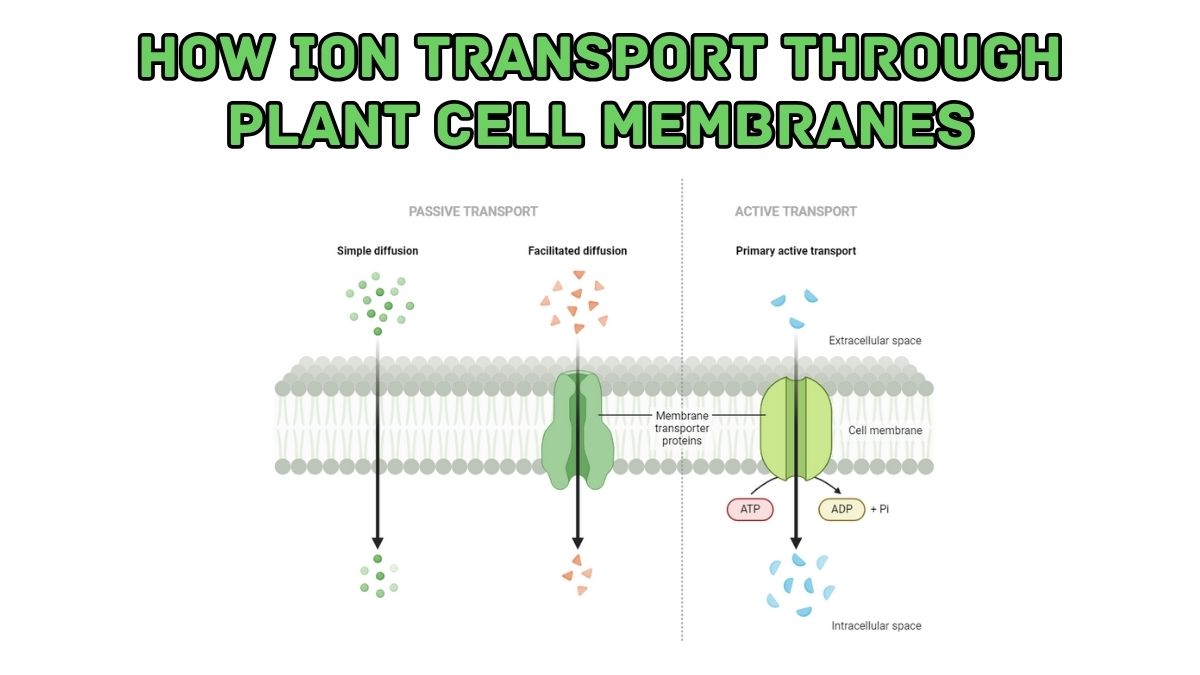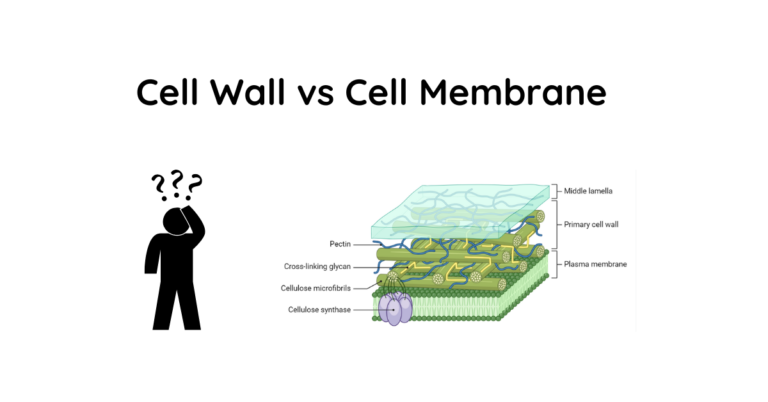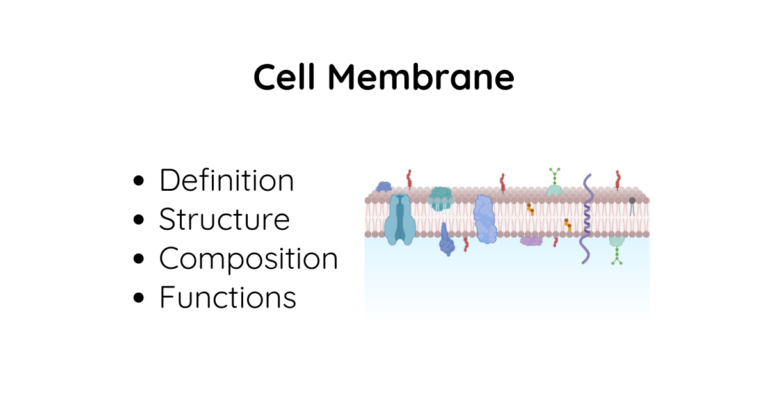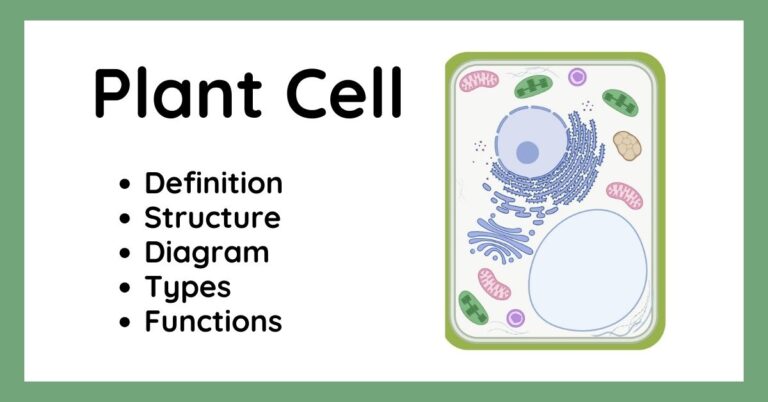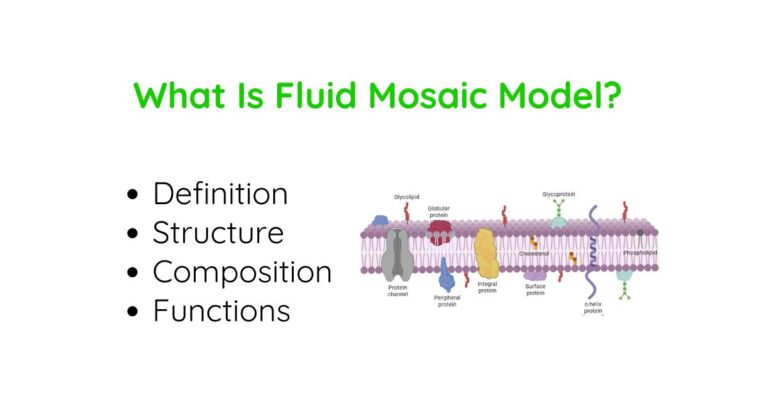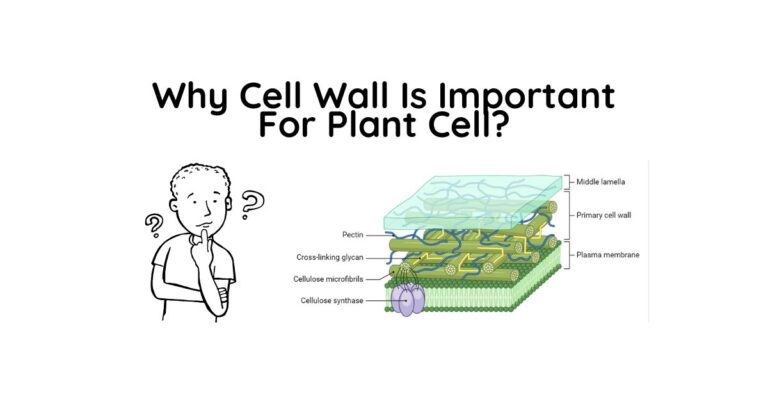How Ion Transport Through Plant Cell Membranes
Ion transport through plant cell membranes is a crucial process that enables plants to maintain proper cellular function, respond to environmental stimuli, and regulate growth and development.
Ions, such as potassium (K+), sodium (Na+), calcium (Ca2+), and chloride (Cl–), play essential roles in various aspects of plant physiology, including osmotic regulation, signal transduction, and enzyme activation. The movement of these ions across cell membranes is mediated by specialized proteins called ion channels, ion pumps, and transporters.
In this article, we will explore the different ion transport mechanisms, the key components involved, and the regulation of ion transport in plants.
Types of Ion Transport Mechanisms
Passive Transport
Passive transport is the movement of ions across a membrane without the input of cellular energy. This process relies on the electrochemical gradient of the ions, which is determined by the difference in their concentrations and electrical charges on either side of the membrane.
There are three main types of passive transport:
- Simple diffusion: This occurs when small, nonpolar molecules or ions move through the lipid bilayer of the membrane, driven by their concentration gradient.
- Facilitated diffusion: It involves the use of channel proteins or carrier proteins to transport specific ions or molecules across the membrane, following their concentration gradient.
- Osmosis: The movement of water molecules across a semipermeable membrane, from a region of high water potential (low solute concentration) to a region of low water potential (high solute concentration).
Active Transport
Active transport is the movement of ions or molecules across a membrane against their electrochemical gradient, requiring the input of cellular energy in the form of ATP. There are two main types of active transport:
- Primary active transport: This directly uses energy from ATP hydrolysis to pump ions across the membrane. Examples include the H+-ATPase and Na+/K+-ATPase.
- Secondary active transport: The movement of one ion or molecule against its concentration gradient with the movement of another ion or molecule down its concentration gradient. This process is driven by the electrochemical gradient generated by primary active transport. Examples include symporters and antiporters.
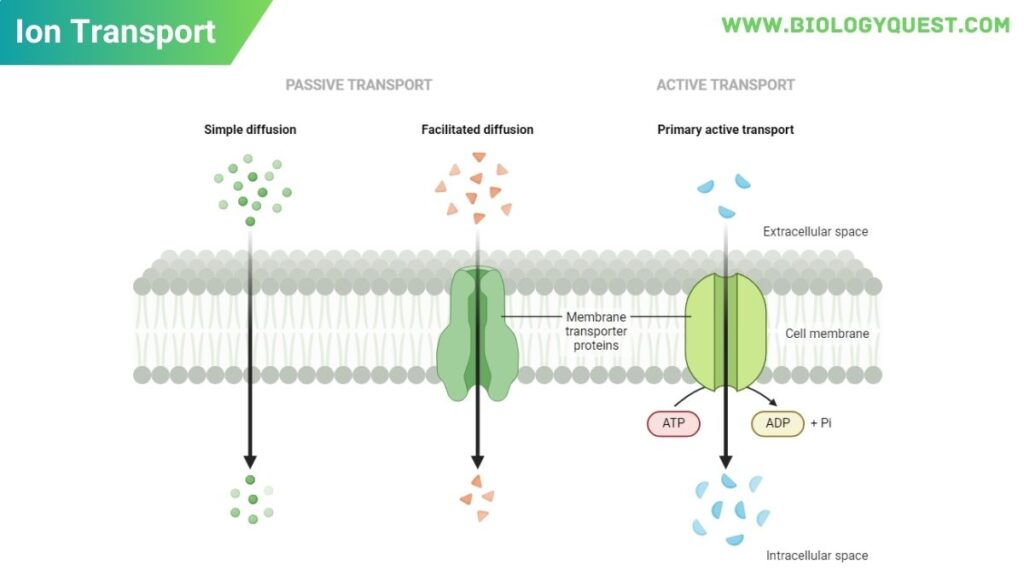
Mechanisms Of Passive Transport
The passive transport uses the electrochemical gradients to transport the ions.
It consists of two components:
- Concentration gradient: Difference in the concentration of an ion or molecule on either side of the membrane. Ions or molecules tend to move from a region of high concentration to a region of low concentration.
- Electrical gradient: Difference in the electrical charge on either side of the membrane. Ions with a positive charge (cations) are attracted to negatively charged regions, while ions with a negative charge (anions) are attracted to positively charged regions.
The combination of these two gradients determines the direction and magnitude of ion movement through channels or transporters.
Examples Of Passive Ion Transport In Plants
Potassium channels
- Potassium channels allow the passive movement of K– ions across the membrane, following the electrochemical gradient.
- These ions are involved in various processes, such as stomatal movement and cell elongation.
Chloride channels
- Chloride channels facilitate the diffusion of Cl– ions across the membrane, which is important for osmotic regulation and charge balance.
Aquaporins In Water Transport
- Aquaporins are water channel proteins that facilitate the rapid and selective movement of water molecules across cell membranes.
- Aquaporins are highly regulated by factors such as phosphorylation, pH, and calcium levels, allowing plants to fine-tune their water transport in response to environmental stimuli.
Active Transport Mechanisms
Active transport uses several mechanisms to transport ions. A few are discussed below:
ATP-driven Ion Pumps
ATP-driven ion pumps use the energy from ATP hydrolysis to transport ions against their electrochemical gradient.
The most well-studied example is the H+-ATPase, which is located in the plasma membrane and generates the proton gradient that drives many secondary active transport processes.
The H+-ATPase consists of several subunits and undergoes conformational changes during the transport cycle, which involves the binding and hydrolysis of ATP, as well as the phosphorylation and dephosphorylation of specific amino acid residues.
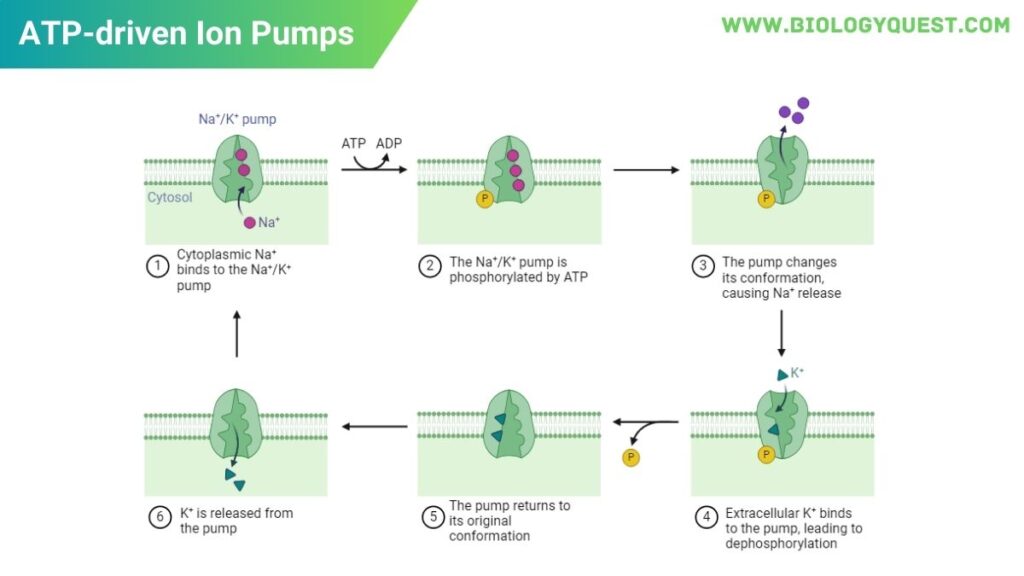
Coupled Transport Mechanisms (Symporters And Antiporters)
Coupled transport mechanisms use the electrochemical gradient of one ion or molecule to drive the transport of another ion or molecule against its concentration gradient.
This process is mediated by symporters and antiporters.
Symporters
- A symporter in plants is the H+/sucrose symporter, which uses the proton gradient generated by the H+-ATPase to drive the uptake of sucrose into the cell.
- The symporter binds both H+ and sucrose on one side of the membrane and undergoes a conformational change that allows the release of the molecules on the other side.
Antiporters:
- An antiporter in plants is the Na+/H+ antiporter (SOS1), which exchanges Na+ for H+ across the plasma membrane.
- This helps to maintain low cytosolic Na+ concentrations, which is crucial for salt tolerance.
- The antiporter uses the proton gradient generated by the H+-ATPase to drive the efflux of Na+ from the cell.
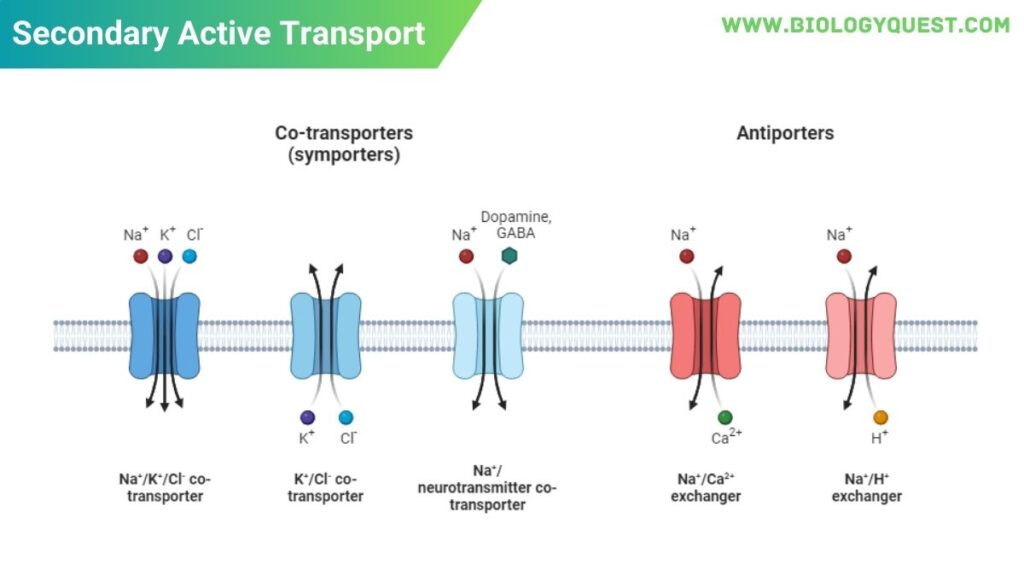
Proton Gradients In Secondary Active Transport
Proton gradients are the driving force for many secondary active transport processes in plants. The H+-ATPase in the plasma membrane and the V-ATPase in the vacuolar membrane generate these gradients by pumping H+ ions out of the cytosol.
The resulting proton motive force (PMF) can then be used by symporters and antiporters to drive the transport of various ions and molecules, such as sucrose, amino acids, and secondary metabolites.
ATP and Other Energy Molecules In Active Transport
ATP is the primary energy source for active transport in plants. It is generated through photosynthesis and cellular respiration and is used by ion pumps to drive the transport of ions against their electrochemical gradient.
In addition to ATP, other energy molecules, such as GTP and pyrophosphate (PPi), can also be used in specific transport processes. For example, the H+-PPase in the vacuolar membrane uses the energy from PPi hydrolysis to pump H+ ions into the vacuole, contributing to the generation of the proton gradient.
Plants also use membrane transport by the fluid mosaic model to transport molecules.
Read more on: Fluid Mosaic Model: Definition, Discovery, Components, Structure And Functions
Comparison Of Passive And Active Transport
| Feature | Passive Transport | Active Transport |
| Energy requirements | No energy input required | Requires energy input (ATP) |
| Speed and efficiency | Slower and less efficient | Faster and more efficient |
| Specificity and regulation | Less specific and less regulated | Highly specific and tightly regulated |
Key Components of Ion Transport
Ion Channels
Ion channels are transmembrane proteins that form pores in the cell membrane, allowing specific ions to pass through.
- Structure and function: Ion channels consist of one or more subunits that form a pore through the membrane. The selectivity of the channel is determined by the size and charge of the pore, as well as the presence of specific amino acid residues that interact with the ions.
- Types of ion channels:
- Voltage-gated channels: These channels open or close in response to changes in the membrane potential.
- Ligand-gated channels: These channels are activated by the binding of specific molecules, such as neurotransmitters or hormones.
- Mechanosensitive channels: These channels respond to mechanical stimuli, such as stretching or pressure.
- Examples of ion channels in plants:
- K+ channels: These channels are involved in various processes, such as stomatal movement, cell elongation, and stress responses.
- Ca2+ channels: These channels play a crucial role in signal transduction and the regulation of cellular processes.
Ion Pumps
Ion pumps are transmembrane proteins that use energy from ATP hydrolysis to actively transport ions across the membrane against their electrochemical gradient.
- Mechanism of action: Ion pumps undergo conformational changes upon ATP binding and hydrolysis, which allows them to transport ions across the membrane.
- Types of ion pumps:
- P-type ATPases: These pumps are characterized by the formation of a phosphorylated intermediate during the transport cycle. Examples include the H+-ATPase and Ca2+-ATPase.
- V-type ATPases: These pumps are found in the vacuolar membrane and are responsible for the acidification of the vacuole.
- Examples of ion pumps in plants:
- H+-ATPase: This pump is located in the plasma membrane and is responsible for generating the proton gradient that drives many secondary active transport processes.
- Na+/K+-ATPase: This pump is involved in maintaining the Na+ and K+ balance in the cell, which is crucial for osmotic regulation and cell turgor.
Transporters
Transporters are transmembrane proteins that facilitate the movement of ions or molecules across the membrane. They can be classified as symporters or antiporters, depending on the direction of transport relative to the concentration gradient.
- Symporters: These transporters move two or more ions or molecules in the same direction across the membrane. For example, the H+/sucrose symporter uses the proton gradient to drive the uptake of sucrose into the cell.
- Antiporters: These transporters exchange one ion or molecule for another across the membrane. For example, the Na+/H+ antiporter (SOS1) exchanges Na+ for H+, helping to maintain low Na+ levels in the cytosol.
- Specific examples:
- HKT1: This is a high-affinity K+ transporter that is involved in the regulation of Na+ and K+ homeostasis in plants, particularly under salt stress conditions.
- SOS1: This Na+/H+ antiporter plays a crucial role in salt tolerance by extruding Na+ from the cell and maintaining low cytosolic Na+ concentrations.
Molecular Regulation Of Ion Transport
Phosphorylation And Dephosphorylation
Phosphorylation and dephosphorylation are common mechanisms for regulating the activity of ion channels, pumps, and transporters. These processes involve the addition or removal of phosphate groups from specific amino acid residues, which can lead to conformational changes that alter the function of the protein.
For example, the plasma membrane H+-ATPase is activated by phosphorylation of a threonine residue in its C-terminal domain, which leads to an increased proton pumping activity.
Regulation By Intracellular Signals
Intracellular signals, such as Ca2+, pH, and cyclic nucleotides, can modulate the activity of ion transport proteins. For example, Ca2+ is a key regulator of many ion channels, such as the cyclic nucleotide-gated channels (CNGCs) and the glutamate receptor-like channels (GLRs).
Changes in cytosolic Ca2+ concentrations can lead to the opening or closing of these channels, which in turn affects various cellular processes, such as signal transduction and gene expression.
Hormones
Plant hormones, such as abscisic acid (ABA), auxin, and gibberellins, can regulate ion transport through various mechanisms.
For example, ABA is a key regulator of stomatal movement and plays a crucial role in the plant’s response to water stress.
ABA triggers the opening of anion channels and the closure of K+ channels in guard cells, leading to stomatal closure and reduced water loss.
This process involves the activation of specific protein kinases and phosphatases that modulate the activity of the ion channels.
Experimental Techniques To Study Ion Transport In Plants
Electrophysiology
Electrophysiological techniques are used to study the electrical properties of ion channels and the movement of ions across cell membranes. These techniques allow researchers to measure the currents and voltages associated with ion transport processes and to investigate the gating mechanisms of ion channels.
Patch-clamp Technique
The patch-clamp technique is a powerful method for studying the properties of individual ion channels. This technique involves the use of a glass microelectrode to isolate a small patch of the cell membrane and measure the currents flowing through the ion channels in that patch. There are several variations of the patch-clamp technique, including:
- Cell-attached patch: The microelectrode is sealed onto the cell membrane without breaking it, allowing the recording of currents through the channels in the patch.
- Inside-out patch: After forming a cell-attached patch, the patch is excised from the cell, exposing the intracellular side of the membrane to the bath solution. This allows the study of ion channels under controlled intracellular conditions.
- Whole-cell patch: The microelectrode is used to break the cell membrane and establish electrical access to the entire cell. This allows the measurement of currents flowing through all the ion channels in the cell membrane.
Voltage Clamp Studies
- Voltage clamp studies involve the use of a feedback circuit to control the membrane potential of a cell and measure the currents flowing through the ion channels at different voltages.
- This technique is used to investigate the voltage-dependent gating of ion channels and to study the kinetics of ion transport processes. Voltage clamp studies can be performed on whole cells or isolated patches of the cell membrane.
Read More: Plant Cell – Definition, Structure, Types, Functions, and Important

